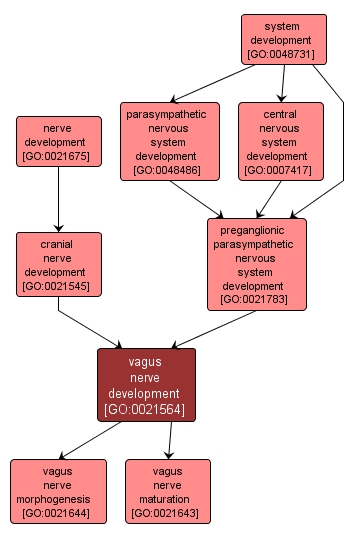| Desc: |
The process whose specific outcome is the progression of the vagus nerve over time, from its formation to the mature structure. This nerve is primarily sensory but also has visceromotor components. It originates in the brain stem and controls many autonomic functions of the heart, lungs, stomach, pharynx, larynx, trachea, esophagus and other gastrointestinal tract components. It controls some motor functions such as speech. The sensory branches mediate sensation from the pharynx, larynx, thorax and abdomen; it also innervates taste buds in the epiglottis. |














